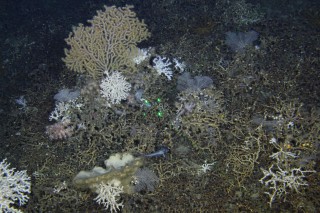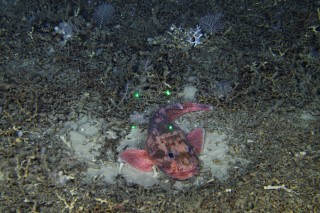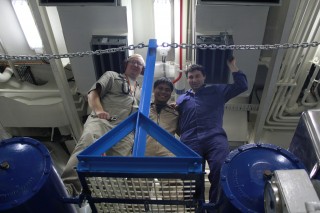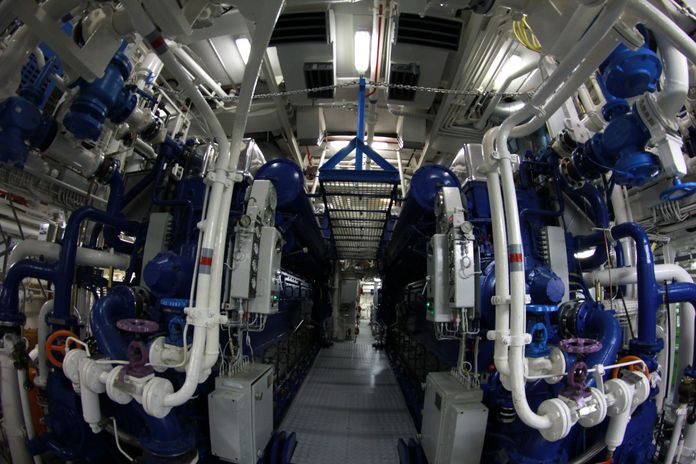
Today was our second full dive day along the West Florida Escarpment, at a site consisting of two distinct mound features about 580 meters deep and 60 km north of yesterday’s dive on Okeanos Ridge. During the dive, the research team discovered another newLophelia aggregation, the second one so far, and they were able to document the diversity.
Selecting a dive site is a bit of an art form. Scientists use high resolution multibeam to identify mounded topographies to identify targets with steep slopes where sediments would not accumulate as well as peak or ridges where currents tend to be accelerated. These types of features favor coral growth and development.

Chief Scientist Peter Etnoyer stated that “depth range and proximity to other coral sites also factor into the decision to select a dive target, but in this case I had a map from a geology paper by Christian Hübscher and colleagues. The images convinced me that coral cover was extensive, and this proved true.”
Coral condition is another matter. The majority of this particular site consisted of extensive dead Lophelia, with intermittent patches of liveLophelia. The three-dimensional structure of the dead Lophelia at the Hübscher mounds differed from that observed at Okeanos Ridge, suggesting a more natural cause of death.

NOAA researcher Andy David said, “this site differed in that the coral had not been homogenised. This is more like what we’d expect to see naturally. Coral dies, and when it dies there is very little to disrupt the skeleton that remains. When the coral skeleton degrades, it will be degraded slowly over time. We saw this full range of coral degradation, from large heads of coral to smaller fragments.”
Temple University Professor Erik Cordes suggested that the reason for the death could be due to corals growing near the edge of their depth range. “There are only a few places in the Gulf where we truly see large aggregations of live coral. Lophelia has a very wide distribution, but large reefs tend to be found between 300 and 600 m depth, and were recently found as deep as 799 m. Upper depth limits on the distribution are mostly temperature controlled, with upper limits around 12 degrees C, and lower limits are likely controlled by food availability, which decreases with depth,” he said.
Dr. Cordes added, “the Hübscher mounds have a relatively high percentage of dead Lophelia, but the dead coral framework that remains provides structure and habitat to a high diversity of organisms.”
The dive provided some insights into how the team might use Global Explorer’s 3D technology for scientific applications. For example, rugosity is a measure of habitat complexity, a second derivative measure (the slope of the slope) that enables researchers to understand the ‘roughness’ of the seafloor. “3D imagery could enable us to make rugosity measurements, which is something you can’t do with a 2D camera. This would enable us to make more fine scale comparisons between habitats” said Andy David. ”2D imagery gives a planar image, but in 3D these differences stand out. This analytical process is evolving and it will take some time to develop.”
In the afternoon, after the dive, Scottish Chief Engineer Allan Watt treated some of the research team to an extensive tour of the engine room. Unlike many other ships, the engine room is painted with bright colors to add cheer to the below sea-level engine room.
When asked whether it is difficult to work below decks for many hours at a time, Allan looked surprised by the question, “I’m a do-er. Down in the engine room, I’m always running out of time in the day. What would I do upstairs? Sit and stare at a screen? Look out a window? No, no, the engine room keeps me busy.” And it’s the engine room that keeps us moving from site to site, here in the Gulf of Mexico. Tomorrow we make our longest transit of the cruise, 18 hours to DeSoto Canyon.


